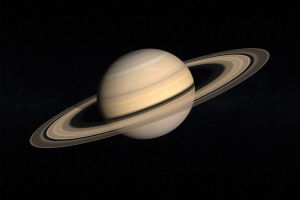What will happen to the earth when the sun goes out?
Many people will definitely answer that after the sun goes out, the earth will definitely fall into darkness, and life will usher in the greatest extinction. Is this really the case?
We all know that if you put a cup of water at 100°C into the freezer, it will not cool down to 0°C as soon as it goes in, but will cool down slowly. In the same way, the fact that the sun is extinguished does not mean that the energy of the sun disappears out of thin air. Perhaps it will be 10,000 years later when human beings really perceive the extinction of the sun.
Next, let's take a look at what will happen to the earth after the sun goes out.
The sun "goes out"
We perceive the sun in two ways.
The first is vision, that is, seeing the sun directly. The second is touch, feeling the heat from the sun.
The distance between the sun and the earth is about 150 million kilometers, and it takes 8 minutes for the light from the sun to reach the earth.
Therefore, many people believe that after the sun goes out, human beings will lose their light in 8 minutes. So is the extinction of the sun really as simple as not shining?
As early as 1920, British astronomer Eddington believed that the energy of stars comes from nuclear fusion reactions, and our sun is the largest nuclear power plant and nuclear reactor. The light we see comes from a display of energy from nuclear fusion in the sun.
The so-called extinction of the sun actually means that the nuclear fusion of the sun stops. However, when the nuclear reaction stops, its energy will not disappear immediately, so the extinction of the sun does not mean the cooling of the sun. In other words, even if the nuclear fusion reaction of the sun stops, the sun is still a hot fireball, radiating heat outward.
Every second, about 600 million tons of hydrogen atoms participate in the nuclear fusion reaction, and the energy received by the earth is only 1/2.2 billion of the total energy of the sun. The sun's light comes from radiation produced by nuclear fusion energy.
We all know that radiation exists for a long time, and it will not disappear just because the nuclear reaction stops. After the sun is extinguished, the radiation will not dissipate, and the sun will still shine.
Physicists have found through calculations that it will take about 10,000 years for the energy generated by the fusion of 600 million tons of hydrogen to dissipate. After the sun stops the nuclear fusion reaction, the energy generated in the last second can continue to radiate for 10,000 years. Therefore, human beings feel that the sun goes out not for 8 minutes, but for 10,000 years.
The lifespan of the sun
The sun is a G-type star in the universe, commonly known as a yellow dwarf. The lifespan of such stars is usually about 10 billion years, and the sun has gone through about 4.6 billion years, which is less than half.
According to the general evolution path of yellow dwarfs, the sun will expand in 5 billion years and become a red giant.
The sun in the red giant period will gradually engulf Mercury, Venus, Earth, and Mars, and the final boundary will be close to the orbit of Jupiter.
When the expansion approaches the limit, the red giant collapses, and most of the outer matter is thrown into the universe, forming a nebula. The core is preserved, emitting a cool white shimmer, which is the white dwarf.
In this way, the sun has finished its life, and the solar system has basically collapsed. At the same time, the nebula formed after the collapse of the sun will begin to form new stars in a certain period of time, starting a new journey.


